Understanding what to look for when choosing a baseball bat has a few requirements. Your league information, some measurements and your personal taste can help you find a perfect stick for your swing.
BAT ANATOMY
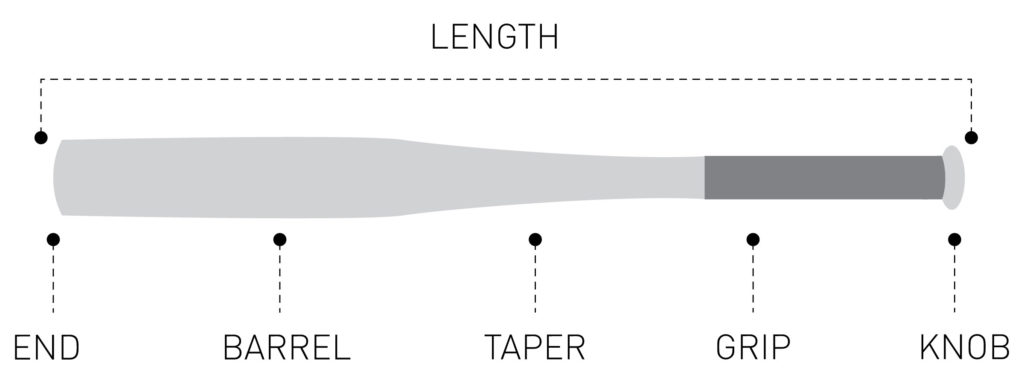
Before digging into which baseball bat to choose, you should first get familiar with the various parts of your lumber. Every bat can be broken down into five essential regions: the knob, grip, handle, barrel and endcap. Beginning from the bottom, the knob helps keep your hands in place as they hold onto the grip of the bat. Next, your bat’s diameter tapers from the skinny handle to the wider barrel. The barrel is where you should look to make contact with the ball. Lastly, an endcap can help improve your bat’s control while limiting the added weight.
AGE AND LEAGUE
When choosing a baseball bat for your upcoming season, one of the first things you should look at is your league rules. The three most common governing bodies for bats are USABat, USSSA and BBCOR. The USABat standard creates a more wood-like bat performance in youth bats while still allowing players to swing lightweight models. BBCOR (Batted Ball Coefficient of Restitution) creates the same wood-like performance in adult baseball bats, even after they’re broken in. USSSA (United States Specialty Sports Association) provides energy transfer bat regulations for leagues governed by USSSA.
Every league, regardless of age, will follow a specific bat standard for their equipment regulations. To give a general starting point:
- Players between the ages of 4 and 6 will likely need a tee ball bat.
- Players between the ages of 7 and 12 will need a USA bat.
- Players between the ages of 13 and 15 will likely need a bat meeting USA or BBCOR bat standards.
Bats often have the standard logo stamped somewhere on the barrel or face of the bat. This can help give you a more visual cue when searching.
Again, be sure to check with a coach or league official prior to purchase to ensure your bat meets league requirements.
LENGTH
With your bat standard narrowed down, your next determining factor should be your measurements. Bat length can affect your swing mechanics and plate coverage. Too long, and you can risk compromising bat speed or swing mechanics. Too short, and you can limit your plate coverage, giving up a portion of your strike zone. Having the right bat length can help you find middle ground between these two scenarios.
There are three ways you can measure whether a bat is the right length:
- Place the bottom of the bat in the center of your chest, pointing it to the side, parallel to your outstretched arm. If you can comfortably reach the top of the bat with your fingertips, the bat is the right length.
- Position the bottom of the bat in the center of your chest, facing outward. If your arm can reach out and grab the barrel of the bat, then it is the correct length.
- Stand the bat up against the side of your leg. If the end of the bat reaches the center of your palm when you reach down, it’s the appropriate length.
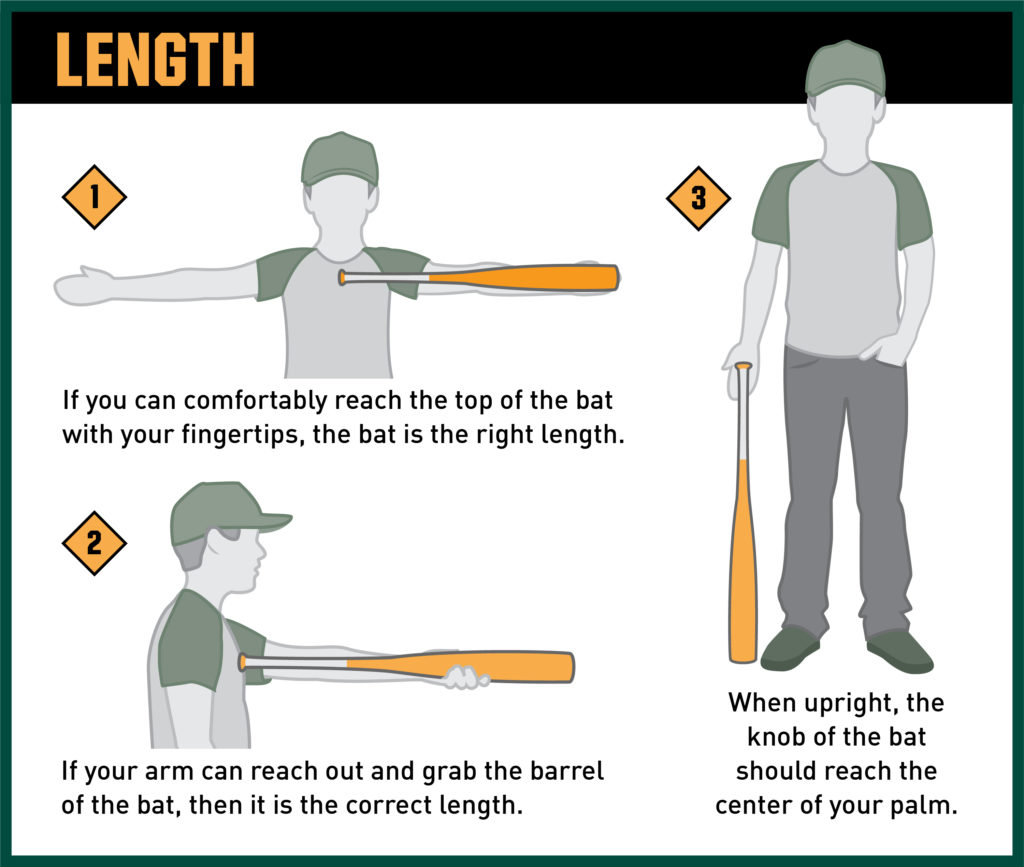
If you’re unable to hold a bat and measure using these methods, use this size chart as a guide. While this chart can help get you started, use the measuring techniques described to find your ultimate fit.
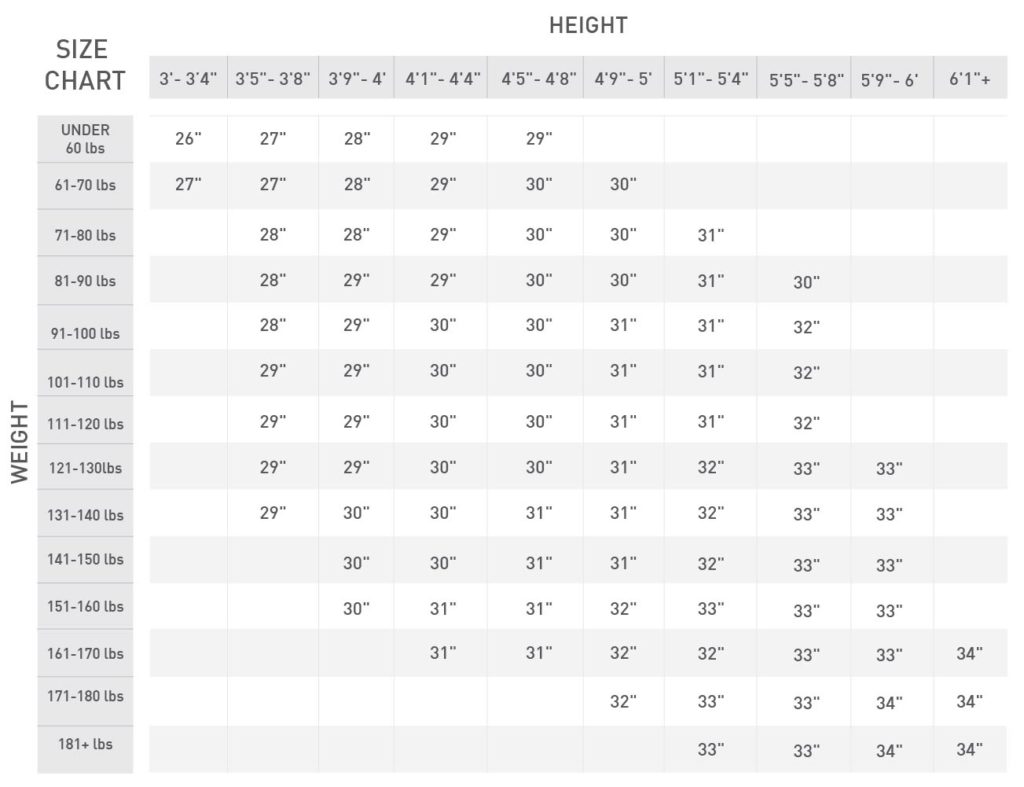
WEIGHT
The best weight is very much based on feel. If you take multiple swings and the bat feels heavy or begins to drop, then it’s probably too heavy for your needs. Try holding the bat handle and extending your arm to your side. If you can’t hold the bat extended for 30 to 45 seconds, the bat might be too heavy for you.
Be sure to look at the “drop weight” as well. A bat’s drop is the measurement determined by subtracting the weight of the bat from its length. For example, a bat that weighs 20 ounces and is 30 inches long will have a drop of -10. The greater the drop weight, the lighter the bat.
Larger, stronger players tend to favor less of a drop weight, which can result in increased power. Smaller players can benefit from greater drop weight, which can help with bat speed.
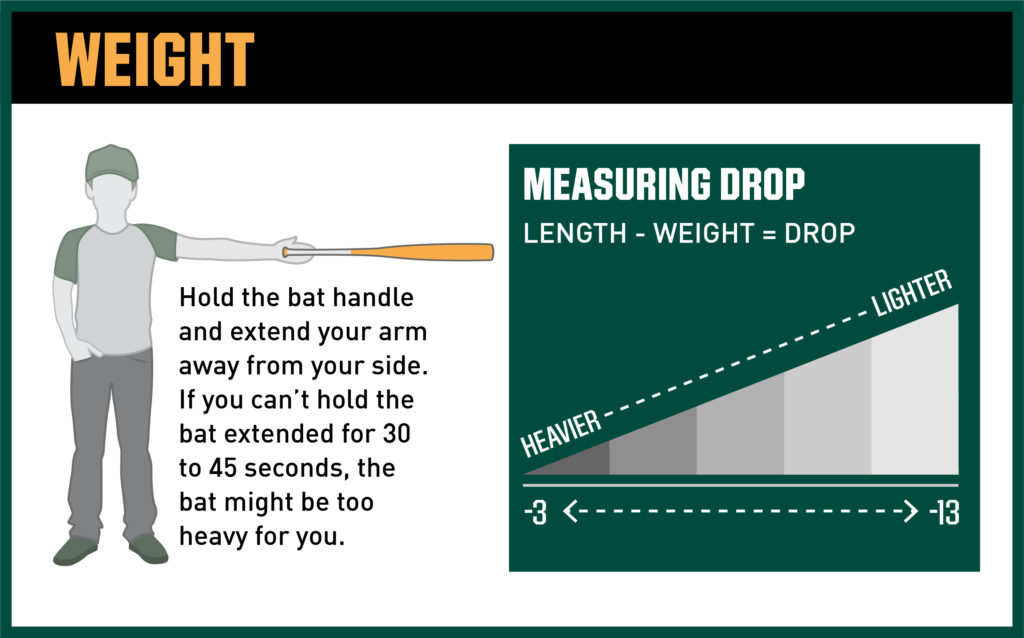
MATERIALS
There are two main materials you will see when choosing a bat: wood and metal. Wood bats can be made from different trees, such as ash, maple or birch. Varying wood types can yield different qualities. To standardize purchasing, most wood bats feature a -3 drop. Still have questions about wood bats? Check out our guide on how to buy a wood baseball bat.
Alloy bats, or aluminum baseball bats, are ready for use right out of the wrapper. This means there’s no break-in time required. They have a smaller sweet spot but are great in any temperature and even tend to last longer due to their durability. Alloy bats can be more affordable than their composite counterparts.
Composite bats tend to have a larger sweet spot and put out less vibration to the hands. This can help reduce the stinging felt after making poor contact. They are more expensive and require a break-in period of about 150 to 200 hits.
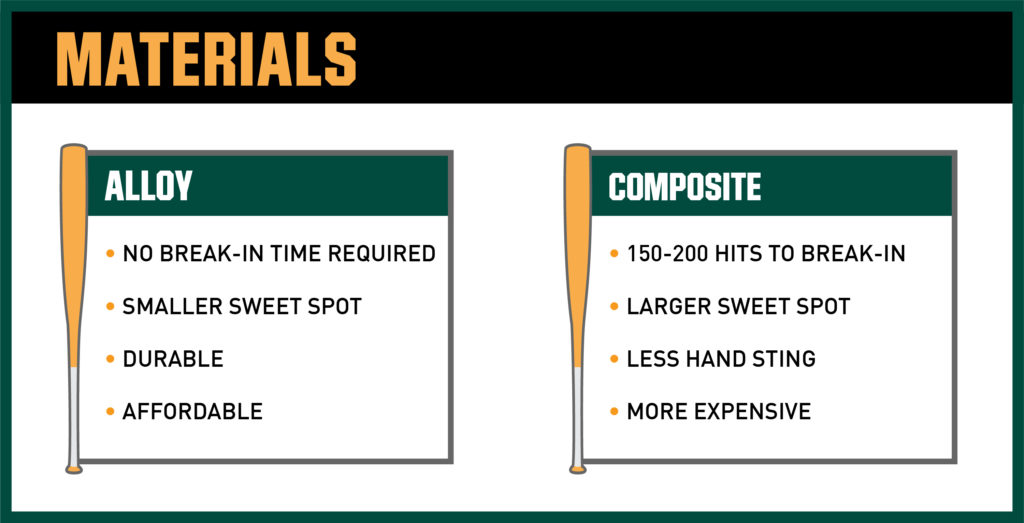
Hybrid options are also available. These bats are typically made with composite handles, which minimize vibration, and alloy barrels, which require no break-in time.
ONE-PIECE VS. TWO-PIECE BATS
A final note to consider when choosing the right bat for you would be selecting a one-piece or two-piece design. The main difference between these two options is how much flex and energy transfer your stick will have.
- As the name suggests, one-piece bats are a continuous piece of metal. Upon contact, there is little flex or give in the bat, resulting in little or no energy loss. This can be great for a balanced, powerful swing, but mishits can cause stinging in the hands.

- Two-piece bats are constructed by fusing a barrel and handle together. This split design can create more flex and “whip” in the swing, resulting in faster bat speeds. Two-piece bats can also withstand vibrations, making them a good option for players looking to curb that stinging feeling.

The way a bat feels in a ballplayer’s hands is always going to be more important than any material performance review. Find a safe place for some practice swings, such as the HitTrax Batting Cages at DICK’S Sporting Goods. Take some cuts with bats that are the right length and weight. Whichever material feels more natural to you should be the one you choose.
Finding the right baseball bat for your needs can be a fun way to personalize your equipment list. Use these baseball Pro Tips to help find your sweet spot with the perfect bat and get the most out of your swing this season.